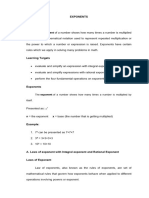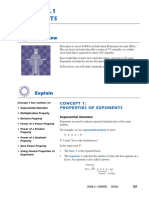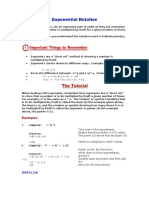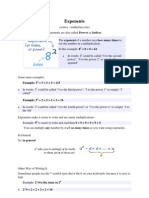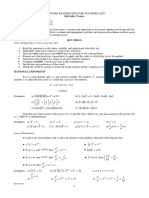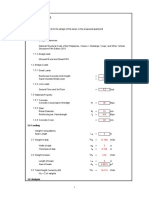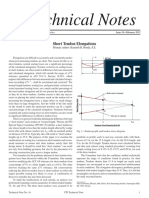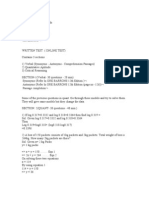0% found this document useful (0 votes)
25 views9 pagesExponents
Exponents are used to describe repeated multiplication, with the base number being multiplied by itself the number of times indicated by the exponent. The document defines exponents and covers basic exponent rules like product of powers, quotient of powers, power of a power, and negative exponents. It also discusses applications of exponents in scientific notation, exponential growth/decay, and algebra.
Uploaded by
reachudaycCopyright
© © All Rights Reserved
We take content rights seriously. If you suspect this is your content, claim it here.
Available Formats
Download as TXT, PDF, TXT or read online on Scribd
0% found this document useful (0 votes)
25 views9 pagesExponents
Exponents are used to describe repeated multiplication, with the base number being multiplied by itself the number of times indicated by the exponent. The document defines exponents and covers basic exponent rules like product of powers, quotient of powers, power of a power, and negative exponents. It also discusses applications of exponents in scientific notation, exponential growth/decay, and algebra.
Uploaded by
reachudaycCopyright
© © All Rights Reserved
We take content rights seriously. If you suspect this is your content, claim it here.
Available Formats
Download as TXT, PDF, TXT or read online on Scribd
/ 9




